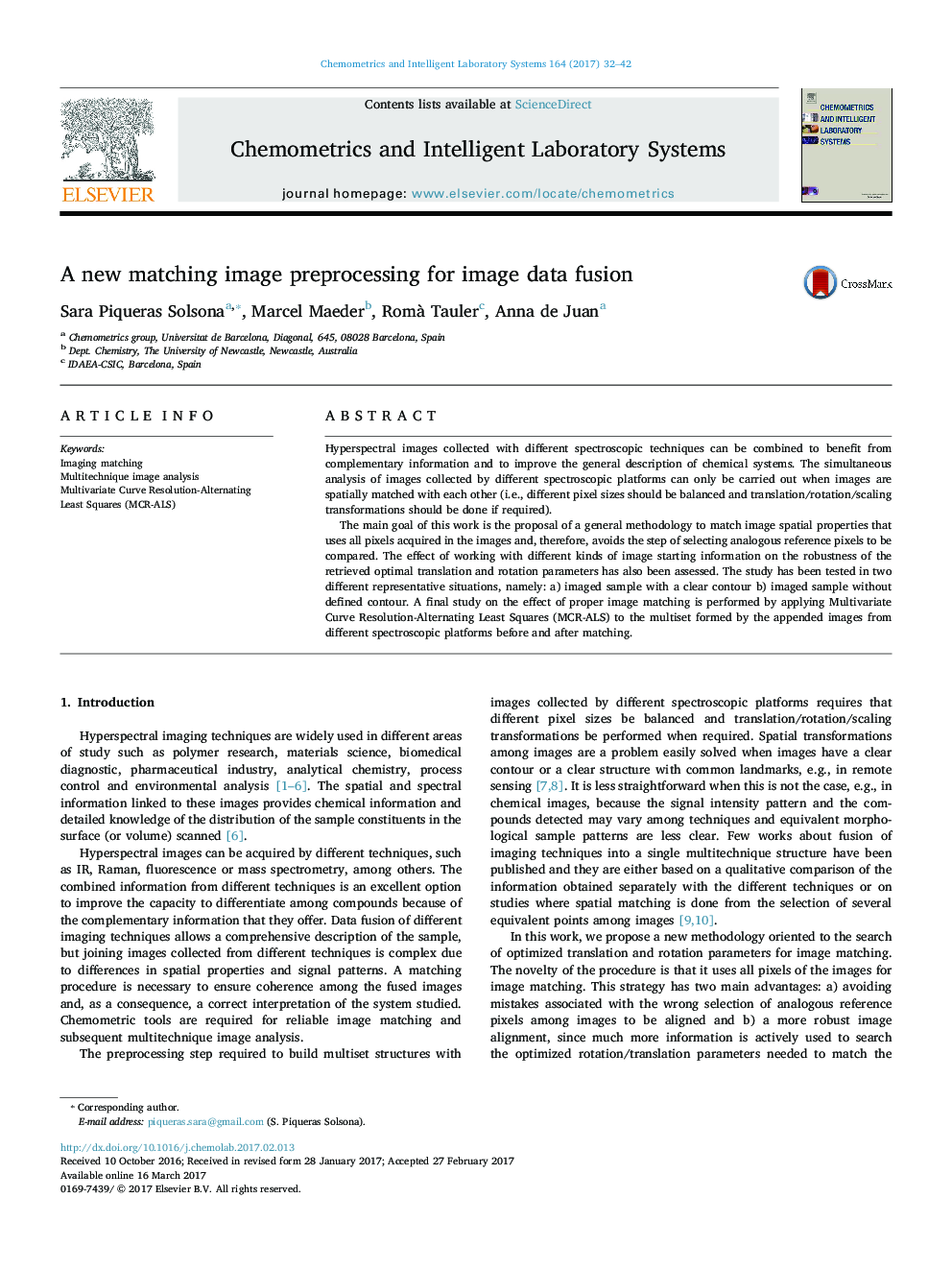| Article ID | Journal | Published Year | Pages | File Type |
|---|---|---|---|---|
| 5132200 | Chemometrics and Intelligent Laboratory Systems | 2017 | 11 Pages |
â¢The method presented matches HSI images from different platforms via a SIMPLEX algorithm.â¢Matching procedure uses all pixels of the images to optimize spatial transformations.â¢No selection of equivalent reference pixels is needed with this approach.â¢Sample contours or MCR resolved distribution maps are used as image matching information.â¢Matching effect on data fusion results is assessed by multiset MCR-ALS image analysis.
Hyperspectral images collected with different spectroscopic techniques can be combined to benefit from complementary information and to improve the general description of chemical systems. The simultaneous analysis of images collected by different spectroscopic platforms can only be carried out when images are spatially matched with each other (i.e., different pixel sizes should be balanced and translation/rotation/scaling transformations should be done if required).The main goal of this work is the proposal of a general methodology to match image spatial properties that uses all pixels acquired in the images and, therefore, avoids the step of selecting analogous reference pixels to be compared. The effect of working with different kinds of image starting information on the robustness of the retrieved optimal translation and rotation parameters has also been assessed. The study has been tested in two different representative situations, namely: a) imaged sample with a clear contour b) imaged sample without defined contour. A final study on the effect of proper image matching is performed by applying Multivariate Curve Resolution-Alternating Least Squares (MCR-ALS) to the multiset formed by the appended images from different spectroscopic platforms before and after matching.
